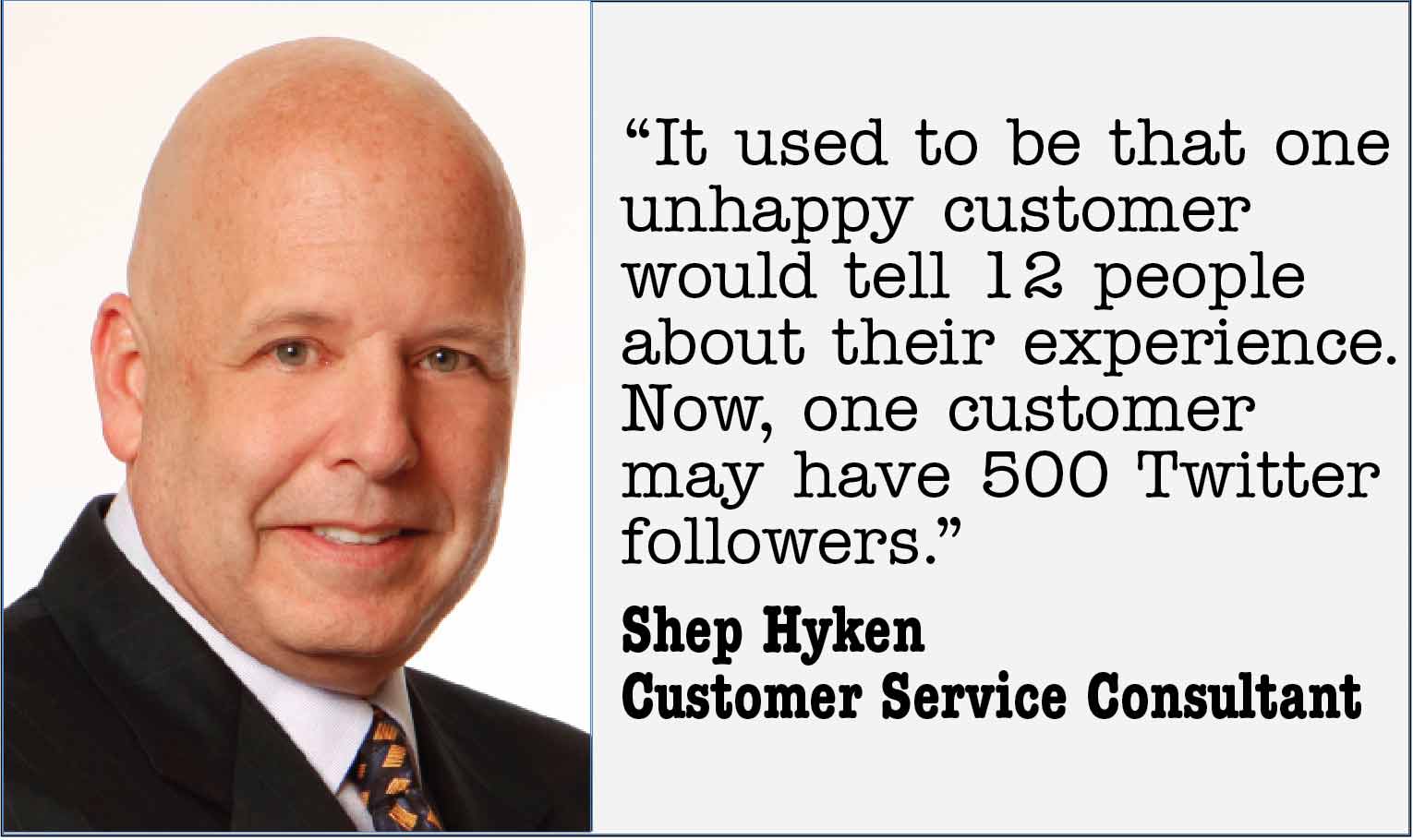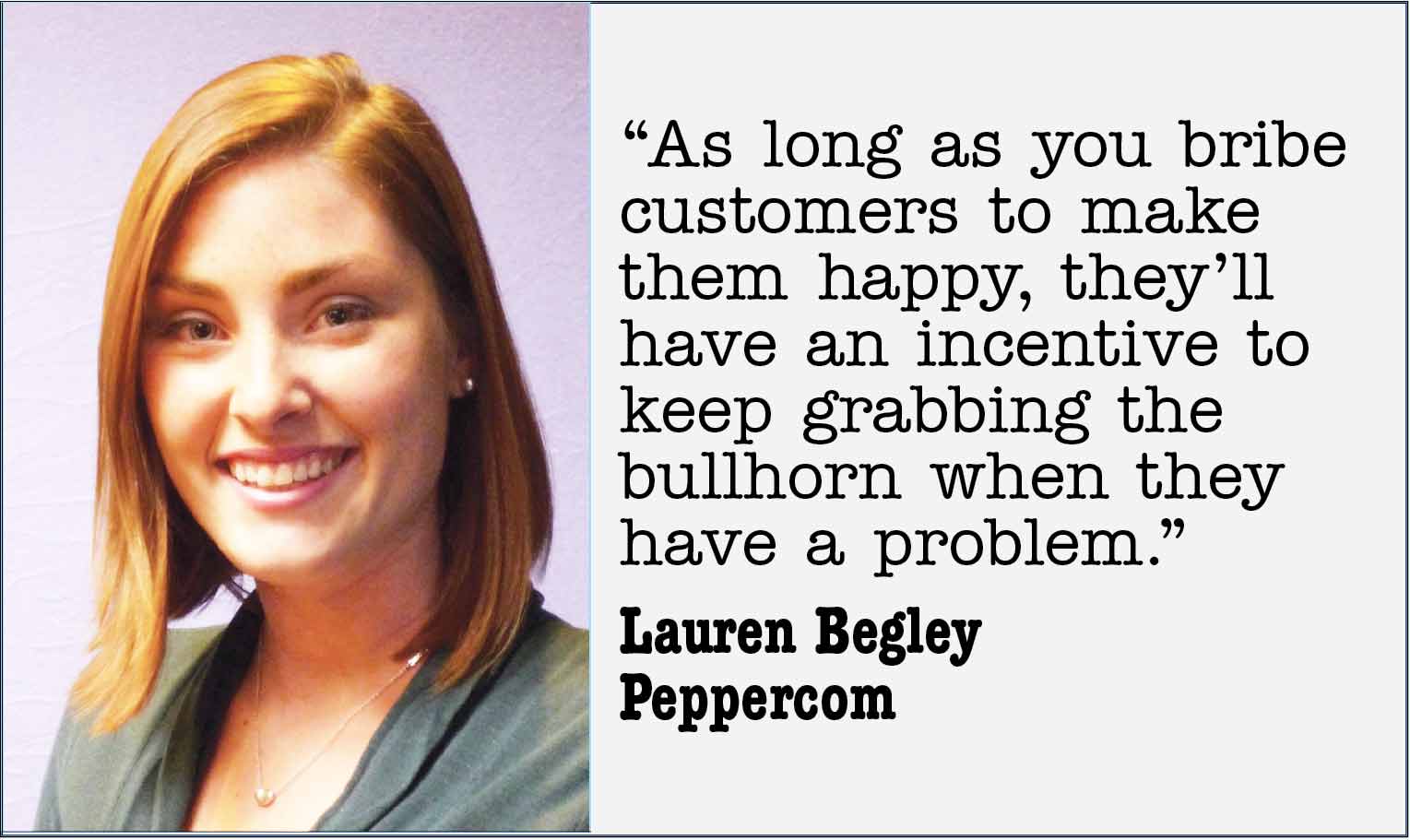Oct. 30, 2011: The pilot of a JetBlue plane stuck on the tarmac for seven hours full of increasingly angry and frustrated passengers pleaded for assistance from airport officials, telling them he “can’t seem to get any help from our own company.”
August 5, 2012: Alaskan Airlines faced outrage as staff is accused of “being the worst of humanity” for “ignoring” a 70-year-old Parkinson’s sufferer.
August 15, 2012: United Airlines lost a girl on a solo trip to camp. Her parents alleged that their 10-year-old daughter flying to summer camp was stranded at one of the world’s busiest airports after United failed to keep track of her.
Okay, it may be unfair to single out major airlines for customer service gaffes. After all, they have to deal with mother nature, crowded skies and regulatory agencies on a daily basis.
 |
But let’s face it: Airlines do take the brunt of customer outrage. Why? “Outside factors prevent them from doing what they promise to do,” says Shep Hyken, a customer service consultant and speaker. “And that is to be on time.”
“Promise” is the key word: Giving a promise to customers and doing your utmost best to keep it is critical for effective customer service, and ultimately critical for an organization’s good reputation, says Hyken.
Simply put, great customer service is great PR. So how can one discipline help the other? It’s about getting everyone in alignment, internally and externally. That’s where the “promise” or mission statement comes in. A single sentence sounds rather simplistic in driving good customer service, but it can be very effective. An example of a good internal statement: Ritz Carlton’s “We’re ladies and gentlemen serving ladies and gentleman.” Another is Outback Steakhouse’s “Great Food, No Rules” fits the bill both internally and externally. Any size organization should have some type of statement, because it gives stakeholders—including employees—a “promise” to rally around, says Hyken.
TRAINING DAYS
Yet this positive alignment can be upset at any time, thanks to social media, the Web and just one employee. That’s why it’s important that organizations hire the right people and train them on customer service issues immediately, says Hyken. “One single person can hijack your best customer service efforts with one phone call or one tweet,” he says. “It used to be that one unhappy customer would tell 12 people about their experience. Now, one customer may have 500 Twitter followers.”
Or more. Consider the recent case of actor Patrick Stewart (Captain Picard on Star Trek: The Next Generation), who on Sept. 13 sent a tweet out to his 116,000 followers that read: “All I wanted to do was set up a new account with @TWCable_NYC but 36hrs later I’ve lost the will to live.” Some 1,115 retweets later, Time Warner Cable had a viral crisis on its hands. (Next to airlines, cable companies appear to take the second-most amount of customer flak.)
 |
The key with all customer complaints—and kudos—is to turn them into a positive for the brand, whether internally, externally or both. That translates into two pieces of advice from Lauren Begley, account supervisor at Peppercom: Don’t run away from customer services issues; and look at every problem from an operational point of view as well.
”You can’t just give a coupon or other perks to customers to get them to stop complaining,” says Begley. “As long as you bribe customers to make them happy, they’ll have an incentive to keep grabbing the bullhorn when they have a problem.” And taking things “offline” to solve a problem won’t display the transparency and honesty needed to advance a brand’s reputation, she adds.
Customer complaints should also serve as an internal wake-up call. “Connect customer problems with operations,” says Begley. “Fix the problem company-wide, so it never happens again.”
And that goes for positive customer comments, too, adds Hyken. “Take a look at positive experiences and determine how you can scale them out,” he says. This will allow you to do the right thing every time, which has a very positive effect.
TURNING THE TABLES
There’s another way to turn customer service into a PR positive. Integrate PR tactics into your customer service program, and use them to your advantage. Hyken notes that many companies monitor Twitter for customer chatter, but do nothing proactively to enhance the customer relationship. So he recommends tweeting out helpful links to resources—like articles and case studies— that customers would want to see.
Along that same line, use the company blog to educate and inform customers. That’s what JetBlue’s Allison Steinberg, senior media analyst, spokesperson and author of the JetBlue blog BlueTales does. “We use it in a proactive and a reactive way,” says Steinberg. “When someone in California is wondering why their flight to New York is delayed, I’ll use the blog to say it may be sunny there, but there’s a big storm in New York.” Those posts, coupled with stories like Unpacked: The Past, Present and Future of Air Traffic Control and Crewmembers Honor 9/11 with HandsOn Greater DC Cares, puts educational and personal faces on the brand (see the sidebar for Steinberg’s blog tips).
CUSTOMER AS PR
There’s another PR tactic that our experts hesitate to recommend: Tooting one’s own customer service horn when an outcome is positive. Hyken cites Nordstrom as a brand that has been successful in telling great stories about its customer service. But generally he cautions against it, because you’ll be opening the brand up to ridicule when the next crisis strikes—and it will.
Begley agrees. “Actions speak louder than words,” she says. “Let the person you’re engaging with do the PR for you, and leave it at that.”
That’s one time when PR and customer service don’t mix.
CONTACT:
Shep Hyken, [email protected]; Lauren Begley, [email protected]; Allison Steinberg, [email protected].
Follow Scott Van Camp: @svancamp01

